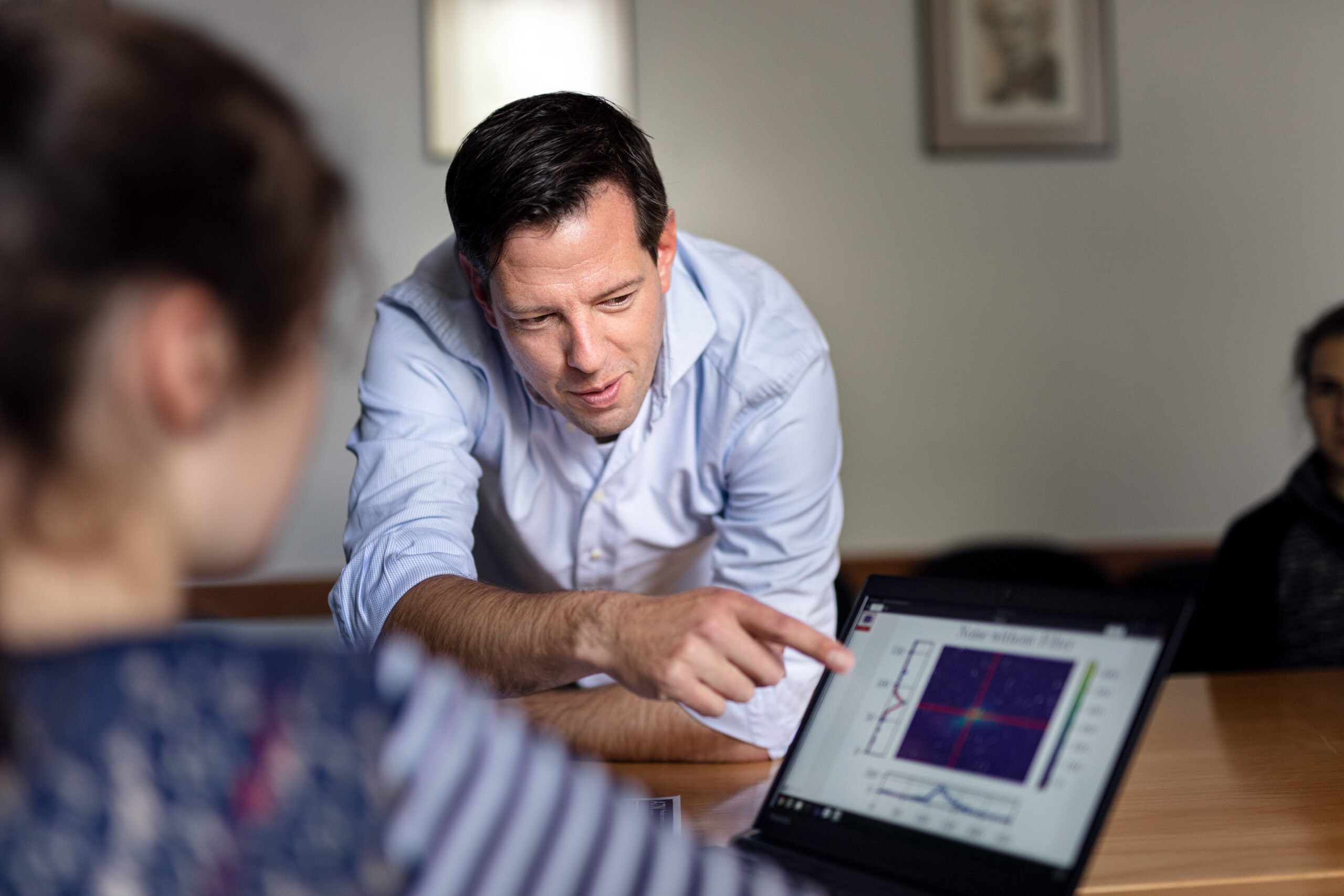1.5 million euros for improved quantum sensors
Physicists at the University of Bonn lead a new European QuantERA collaborative project
They originate from the world of the smallest particles and have the ability to measure things with the highest precision – quantum sensors are currently veritable stars among experts. For a project aimed at improving such sensors, physicists at the University of Bonn and their international partners are now receiving funding of around 1.5 million euros from the European QuantERA program. In their project, the researchers want to guide laser-cooled atoms through hollow-core photonic crystal fibers in order to incorporate them into quantum sensors and quantum computers.
The Technical University of Darmstadt, the Paul Scherrer Institute (Switzerland), the University of Torun (Poland) and the company Alpine Quantum Technologies (Austria) are involved.
Acceleration, rotation, magnetic fields or currents are just some of the quantities about which quantum sensors can provide precise information. The sensors are used in many areas, for example in medicine, automotive technology or geodesy. Researchers use them for their work on quantum computing, precision measurements and so-called
optical clocks, among other things.
The sensors must be as small and precise as possible. To achieve this, scientists are already using a proven method by placing the sensors on a chip. With the help of small wires, they conduct the necessary signals and voltages onto them. Waveguides and optical fibers in turn conduct the light fields onto the chip. In the end, hundreds of
contacts and fibers are connected.
However, a different method has so far been used to generate the atoms that are often at the heart of the sensor: One heats a small sample until the atoms evaporate and can be captured. “This causes problems, however, because the oven required for this takes up a lot of space and the heat generated is very disruptive to the measurement. After
all, we work with very low temperatures in the cryostat,” explains Prof. Dr. Simon Stellmer from the Institute of Physics at the University of Bonn, coordinator of the new “QuantumGuide” project.

(c) Simon Wegener
In order for our technology to leave the quantum optics lab and become a commercial product, it needs to be compatible with a wide range of applications and at the same time become more efficient. That is precisely the goal of the QuantumGuide project.
Prof. Simon Stellmer, Coordinator of QuantumGuide
Atom source on chip
He and his colleagues from Germany, Austria, Poland and Switzerland work on an alternative approach aiming to also integrate the atom source on the chip. For this purpose, individual atoms are to be introduced into a hollow-core fiber at a spatial distance and then brought to the sensor through the fiber.
The preliminary work has already been completed. In the next step, the team wants to prepare the system for commercialization. “In order for our technology to leave the quantum optics lab and become a commercial product, it needs to be compatible with a wide range of applications and at the same time become more efficient. That is precisely the goal of the QuantumGuide project,” Stellmer emphasizes. He is a member of the Transdisciplinary Research Area “Matter” at the University of Bonn and of the Cluster of Excellence “Matter and Light for Quantum Computing (ML4Q)”, an alliance of the Universities of Bonn, Cologne and Aachen and the Research Center Jülich.
Another member of the two consortia is also pleased to receive funding: Prof. Dr. David Luitz from the Institute of Physics at the University of Bonn is collaborating on another newly funded QuantERA project. It is named DQUANT.
The QuantERA program
The QuantERA program is a European network of 39 research funding organizations from 31 countries. The goal of the program is to support excellent European collaborative projects that have the potential to bring quantum technologies from basic research to market maturity. Currently, 77 projects are funded across Europe with a total amount of 89 million.
Contact:
Prof. Dr. Simon Stellmer
Physics Institute of the University of Bonn
Phone: +49 228 73 3720
Email: stellmer@uni-bonn.de